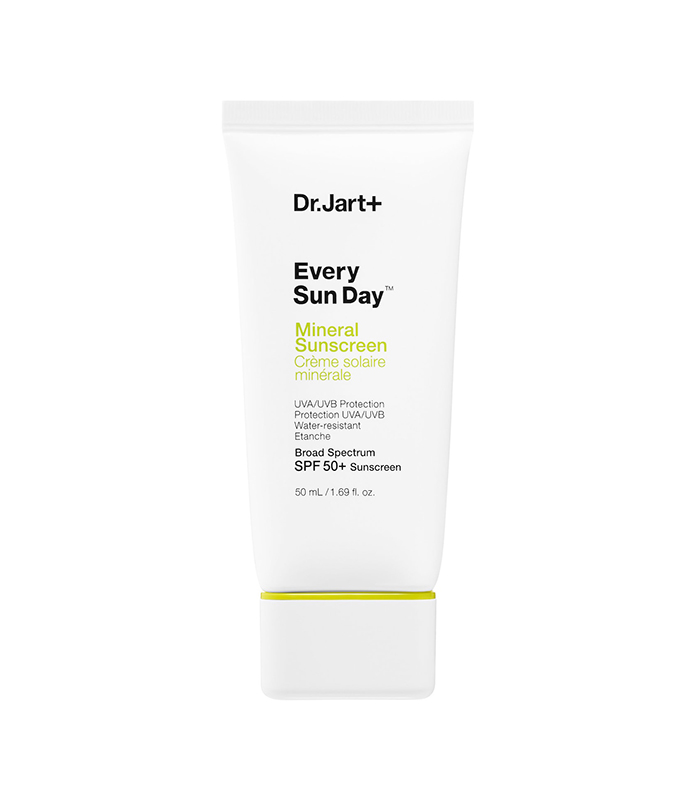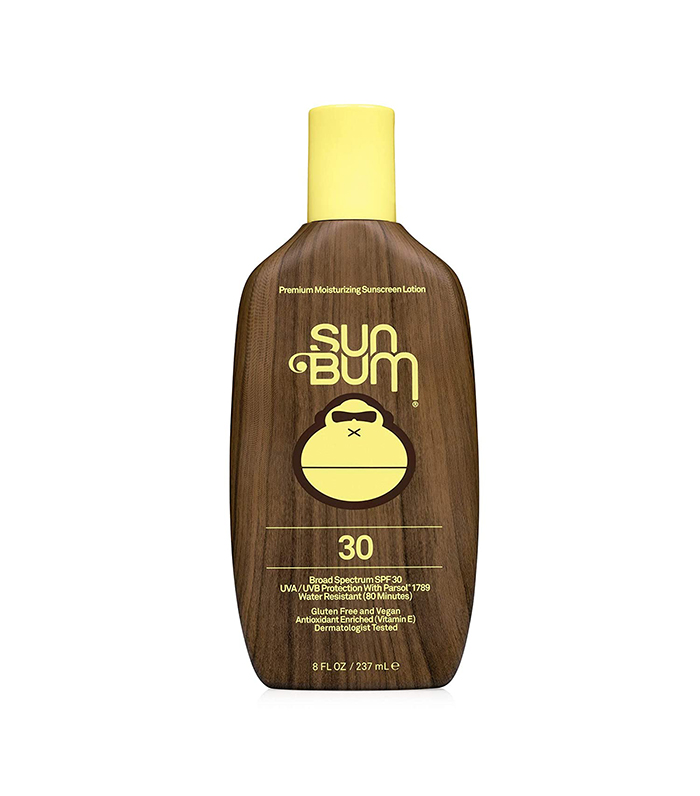I Asked a Dermatologist What's the Deal With Organic Sunscreen—Here's the Truth
A trip down the sunscreen aisle at the store can get pretty overwhelming at times. The terms seem endless: SPFs, mineral, organic, UVA, UVB, reef-safe, etc. Up until recently, I would just grab the sunscreen I had been using for years and go, not really looking into the ingredients or terms.
But just like you might read the labels on the food you eat, it's important to take a look at the labels on the products you're putting on your body. It's helpful to do some research to know that what you're applying to your body isn't harming you or making your skin freak out.
We've covered chemical versus mineral and SPF in another story, so now we're going to focus on the term "organic" and what it actually means when it comes to sunscreen.

We have an idea of what "organic" means when it comes to food, but when the term is used to describe a sunscreen, it becomes a little bit foggier. "This is a tricky question to answer since organic has so many meanings," says Heather D. Rogers, MD, founder and CEO of Doctor Rogers Restore and co-founder of Modern Dermatology in Seattle. "Probably the most commonly held definition involves the use of food of animal or plant origin produced without chemically formulated fertilizers, growth stimulants, antibiotics, or pesticides."
Rogers explains that the interpretation has evolved from just describing food to describing products and their ingredients. In this case, organic is a regulated labeling term that means the ingredients were produced through approved methods and verified by a USDA-accredited certifying agent. Both entire products or individual ingredients in a product can be labeled as organic.
"Another definition of organic is 'of relation to carbon compounds,' which, when applied to sunscreen, means carbon-based chemicals are used to protect the skin from UV radiation," Rogers adds. "Here, the chemical sunscreen ingredients are technically considered organic, as in 'organic chemistry,' and are a chemical with a carbon backbone (oxybenzone, avobenzone, and octinoxate) instead of mineral or physical or inorganic sunscreens made from zinc and titanium, which do not contain carbon."

If you're still confused, that's okay. It's a lot to take in, especially when you don't have a medical degree. Instead, Rogers says to look closely at the labels instead of just blindly stocking up on sunscreens that have an organic sticker.
"Since organic terminology is extremely confusing, particularly when it is applied to sunscreen, it is not a label I would focus on," she recommends. "Instead, look for sunscreens with fewer ingredients that are described as 'mineral,' 'physical,' and 'hypoallergenic.' Make sure your sunscreen contains at least 10% zinc oxide in order to provide protection against both UVB rays that cause burns and UVA rays that are longer, come through windows, and cause brown spots and wrinkles. Increasingly, I tell my patients to look for sunscreens labeled as 'reef-safe,' which means the ingredients aren't toxic to coral reefs and other marine life."
With that in mind, we rounded up the sunscreens that fit the bill—and yes, a lot of them are labeled as organic. Take a look below:
Face Sunscreens

Drunk Elephant's face sunscreen is formulated with 20% zinc oxide, antioxidant-rich algae extract, and sunflower sprout extract to provide UV and radical damage protection. It's lightweight and sheer, so no chalky or greasy finish.

This sunscreen is not only formulated with zinc oxide, but it also contains yellow passion fruit seed extract to protect against pollution and free radicals, and rice starch to absorb oil, control shine, and minimize the appearance of pores. To easily blend, it's recommended to mix the sunscreen with a moisturizer or foundation.
Body Sunscreens

Coola's sunscreen is reef-safe, vegan, and cruelty-free. It has UVA and UVB protection and is formulated with antioxidant-rich nutrients like red raspberry seed oil, buriti oil, meadowfoam seed oil, prickly pear extract, and natural peach flower extract.

Blue Lizard's zinc sunscreens provide a lot of sun protection and are paraben- and fragrance-free, so it's perfect for people with sensitive skin. You'll get up to 40 minutes of protection in the water before you have to reapply. It also doesn't contain oxybenzone or octinoxate, which means it's reef-safe.

Thinksport's sunscreen has a rating of "1" on the Environmental Working Group's list of sunscreens, meaning it has low hazards linked to its ingredients. The zinc formula is water-resistant for up to 80 minutes, absorbs easily, and doesn't have an oily feel.

Another sunscreen with a number one ranking on EWG's list, Two Peas' lotion contains 20% zinc oxide plus plant-derived ingredients like coconut oil, shea butter, jojoba oil, and vitamin E.

Raw Elements' face-and-body sunscreen has a number one rating on EWG. Its sole active ingredient in zinc oxide, it doesn't contain synthetic chemicals, and it's rich in antioxidants. The reef-safe sunscreen is gentle and offers up to 80 minutes of protection.

You don't have to worry about greasy residue with this sheer body-and-face sunscreen. The mineral formula contains zinc oxide is hypoallergenic, and won't clog pores. The National Eczema Association gave it a seal of acceptance, so it's sensitive skin–friendly, too.
Next up, I had skin cancer at 20 years old—here are the five suncare steps I never forget.
This article was originally published at an earlier date and has been updated.
Sarah is lifestyle writer and editor with over 10 years of experience covering health and wellness, interior design, food, beauty, and tech. Born and raised in Los Angeles, she attended New York University and lived in New York for 12 years before returning to L.A. in 2019. In addition to her work at Who What Wear, she held editor roles at Apartment Therapy, Real Simple, House Beautiful, Elle Decor, and The Bump (sister site of The Knot). She has a passion for health and wellness, but she especially loves writing about mental health. Her self-care routine consists of five things: a good workout, “me” time on the regular, an intriguing book/podcast/playlist to unwind after a long day, naps, and decorating her home.









